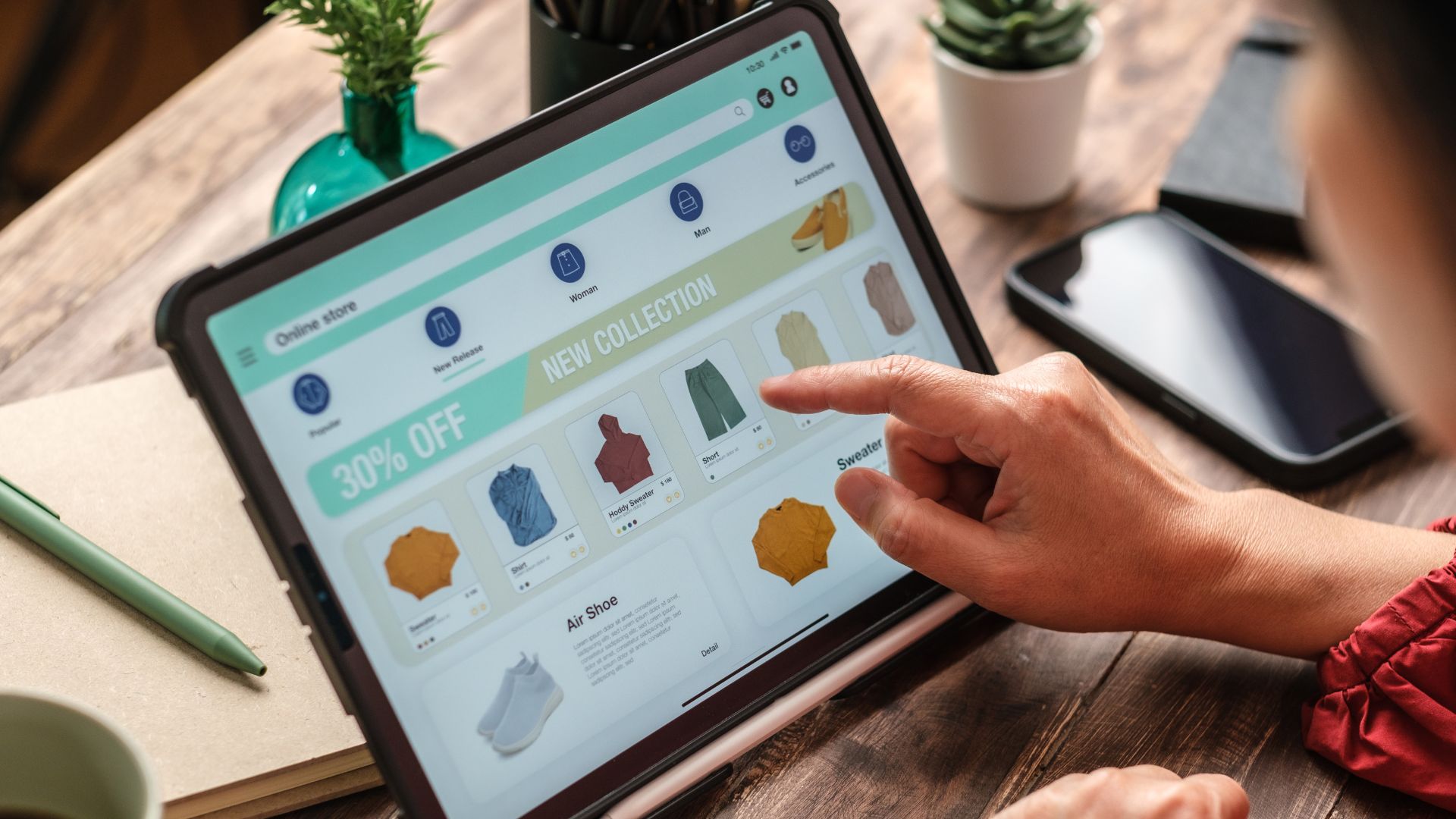If you’re a frequent Filipino online buyer, you probably know a lot of e-commerce sites like the orange app and most likely, the Filipino term “budol.” In the context of online shopping, “budol” refers to the act of being swayed by online deals, most often by trendy or viral sellers, to the point of buying them in an instant. In actuality, the word is used too to refer to the act of tricking or deceiving someone and is prevalent in real life.
In an era where Filipinos engage in and spend a lot through online shopping, online frauds or scammers are also spreading like wildfire. They are getting more and more cunning each day but, consumers, when properly advised or well-informed, can outwit fake sellers and be wise enough to avoid deception. Let’s dive deeper into it and learn how to avoid e-commerce fraud with these ten tips and advice.
1. Research the Seller’s Profile Thoroughly
How To Do It:
Before making any purchase on platforms like Facebook Marketplace or other e-commerce sites, spend time examining the seller’s profile. Look for:
- The length of time the account has existed. Scammers often use newly created or short-term accounts.
- Past transactions, comments, or reviews. Reliable sellers will often have feedback from previous buyers. Check if they have been tagged in successful sales.
- Profile details like location, bio, and profile picture. Legitimate sellers tend to have consistent and complete information.
What Will Happen If Not Done:
If you neglect to research the seller, you might end up dealing with a fake account or scammer. These profiles are often set up quickly and may disappear once the scam is completed, leaving you without any means to resolve issues or retrieve lost money. Scam sellers can ghost you after receiving payment or provide fake products, and you won’t have recourse if the profile vanishes.
Example Scenario:
You come across a great deal on a high-end phone and, without checking the seller’s history, proceed with the transaction. After payment, the seller’s profile is deleted, and there is no way to contact them or report the scam through the platform.
2. Beware of Deals That Seem Too Good to Be True
How To Do It:
Always compare prices and be skeptical of items sold at a fraction of their usual cost. Do quick searches to see the average price of the item on other platforms. A common scam tactic is to lure buyers in with prices far below market value, making the deal look irresistible. Ask yourself: why would the seller offer this item so cheaply?
What Will Happen If Not Done:
If you fall for a deal that’s “too good to be true,” you’re likely to lose money. Scammers use attractive pricing to attract multiple victims quickly. You may pay for an item and never receive it, or you may get a counterfeit or damaged version of what you expected. Additionally, scammers may ask for payment through untraceable methods, making it impossible to recover your funds.
Example Scenario:
You see a listing for a designer handbag worth $500, but the seller is offering it for just $100. Without checking the price against other sources, you quickly purchase it. The item either never arrives, or it turns out to be a poor-quality counterfeit with no way to contact the seller for a refund.
3. Avoid Transactions Outside the Platform
How To Do It:
Stick to the messaging and payment systems within the platform you’re using. Platforms like Facebook Marketplace and others offer buyer protections when transactions are conducted through their systems. Scammers may try to get you to communicate via WhatsApp, email, or other messaging services to avoid platform scrutiny. They might also suggest using alternative payment methods like bank transfers or apps that don’t offer buyer protection.
What Will Happen If Not Done:
Moving communication or payment outside the platform strips away any protection the e-commerce site may offer. If you encounter a problem, such as receiving a faulty item or not receiving it at all, you won’t be able to file a formal complaint through the platform. Scammers often exploit this, knowing that once you’re off-platform, it’s much harder for you to take legal or formal action against them.
Example Scenario:
A seller tells you that they can give you a discount if you transfer the payment directly to their bank account, bypassing the platform’s payment system. You agree, thinking you’re saving money. However, the item never arrives, and because the transaction didn’t go through the platform, you can’t report it as fraud or request a refund.
4. Use Secure Payment Methods
How To Do It:
Always use secure payment methods, like PayPal or credit cards, that offer built-in buyer protection. Many e-commerce platforms integrate their own payment systems, which are designed to protect both buyers and sellers. Ensure that any payment you make is processed through a legitimate, traceable platform. Avoid sending money via bank transfers, Western Union, or prepaid gift cards, as these options typically offer no protection and are hard to trace.
What Will Happen If Not Done:
If you use an insecure or untraceable payment method, recovering lost funds will be nearly impossible. Scammers often prefer these methods because they can quickly cash out and vanish, leaving no trail behind. Using an unprotected payment method can leave you financially exposed, and you won’t be able to dispute the transaction if something goes wrong.
Example Scenario:
You buy a laptop from a seller and agree to send the payment via a bank transfer, thinking it will be quicker and easier. After the payment is made, the seller stops responding, and the laptop never arrives. Since bank transfers are not covered by buyer protection, you cannot dispute the transaction or recover your funds.
5. Meet in Person When Possible
How To Do It:
When buying from local sellers, arrange to meet in a public place, such as a coffee shop, shopping mall, or police station parking lot. Avoid meeting in isolated or private areas like your home or theirs. Always bring a friend or let someone know where you are going. If you’re buying something like a phone or laptop, test the item in person before handing over payment to ensure it works as expected.
What Will Happen If Not Done:
If you meet in a private or remote location, you risk being scammed or put in a dangerous situation. Some scammers may use in-person meetings to intimidate or pressure you into completing a deal. Worse, there have been cases where fraudulent in-person deals have led to theft or physical harm. Additionally, without seeing the product before purchase, you might end up paying for a faulty or counterfeit item.
Example Scenario:
You agree to meet a seller at a quiet location to purchase a high-end phone. Upon meeting, the seller pressures you to hand over the money before you can properly check the phone. After you pay, you realize the phone doesn’t work, and the seller quickly leaves. With no way to retrieve your money, you’re left with a useless product.
6. Request Clear, Detailed Photos and Descriptions
How To Do It:
Ask the seller for multiple high-quality photos of the item from different angles. Request specific details that might not be visible in general photos, such as serial numbers, product tags, or close-ups of any identifying marks. If the listing only has stock images or generic photos, ask the seller to provide photos of the actual item in their possession. This will help you verify the legitimacy of the product and reduce the chances of receiving counterfeit or misrepresented goods.
What Will Happen If Not Done:
If you don’t ask for clear photos and descriptions, you risk receiving an item that looks completely different from what was advertised. Scammers often use stock images or photos taken from other listings to mislead buyers. Without detailed photos or information, you might end up with a damaged, counterfeit, or poor-quality product. Once the item arrives, it will be much harder to dispute the sale if you haven’t gathered enough information to support your case.
Example Scenario:
You see a post for a branded watch and the listing only has one image, which looks like it could be a stock photo. Without asking for additional photos or specific details, you proceed with the purchase. When the watch arrives, it turns out to be a cheap counterfeit with no resemblance to the one in the picture. The seller refuses to refund you, and you realize you’ve been scammed.
7. Check for Scammer Tactics in Communication
How To Do It:
Pay close attention to the way the seller communicates. Genuine sellers will typically respond promptly, answer your questions in detail, and provide transparent information about the product. Scammers, on the other hand, often rush the process, avoid answering direct questions, or provide inconsistent or vague information. Be wary of messages that pressure you into making a quick decision or offer deals only available for a limited time. Always ask specific questions about the product, payment method, and delivery details to gauge the seller’s legitimacy.
What Will Happen If Not Done:
If you fail to recognize the signs of a scammer’s communication tactics, you might fall for their tricks and lose money. Scammers often rush buyers into making quick decisions, taking advantage of their urgency. They may avoid answering your questions or try to divert the conversation, leaving you unsure about the product’s condition or authenticity. If you proceed without verifying these details, you may end up with a fake or non-existent product, with little chance of recovering your money.
Example Scenario:
You inquire about a product on Facebook Marketplace, and the seller insists that others are interested, urging you to send payment immediately to secure the deal. They avoid answering your questions about the product’s condition and refuse to meet in person. Feeling the pressure, you make the payment only to realize later that the item never existed and the seller is unresponsive.
8. Verify the Item’s Authenticity
How To Do It:
When buying branded or high-value items, especially electronics, luxury goods, or collectibles, take extra steps to verify the authenticity of the product. Research how to identify fakes by checking serial numbers, logos, and other tell-tale signs of quality. For instance, authentic electronics may have manufacturer labels or specific hardware specifications, while luxury goods often come with certificates of authenticity or unique serial numbers. You can also ask for proof of purchase or previous receipts to ensure the item was bought legitimately.
What Will Happen If Not Done:
If you don’t verify the authenticity of the item, you may end up buying a counterfeit product, especially when purchasing from online marketplaces where scams are common. Fake products often look very similar to the real thing in photos but are of inferior quality or functionality. Once you receive the item, you may realize that it doesn’t meet your expectations or even break down quickly, leaving you with a useless item and no recourse.
Example Scenario:
You see an ad for a designer handbag at a steep discount. The listing has only one photo, and the seller insists it’s an authentic item but refuses to provide additional photos or a certificate of authenticity. You decide to take the risk and buy it, only to receive a poorly made counterfeit. Because the item came without any verification of its authenticity, you’re stuck with a fake product that’s worthless compared to what you thought you were purchasing.
9. Use the Platform’s Fraud Protection Features
How To Do It:
Many e-commerce platforms, like Facebook Marketplace or other online sites, have built-in tools designed to detect and prevent fraud. Familiarize yourself with these features by exploring the platform’s Help Center or FAQ section. If you encounter a suspicious seller or activity, immediately report the issue through the platform’s reporting feature. Some platforms offer buyer protection programs if you follow specific guidelines for making payments and communicating through their systems. Ensure that all transactions, communications, and agreements stay within the platform to benefit from these safeguards.
What Will Happen If Not Done:
If you ignore the platform’s fraud protection features, you may be left vulnerable if a transaction goes wrong. Without reporting suspicious activity, scammers can continue preying on other users, and the platform may not take action. Additionally, not using the platform’s secure payment system might disqualify you from protection policies, meaning you won’t be able to get your money back if scammed. By failing to take advantage of these features, you put yourself at a greater risk of fraud with no formal way to dispute or resolve issues.
Example Scenario:
You purchase a gaming console through Facebook Marketplace and agree to communicate through a third-party messaging app and pay via a wire transfer. After sending the money, the seller stops responding. Since you didn’t use the platform’s payment system or fraud protection, Facebook cannot assist you, and you’re left with no recourse to recover the funds.
10. Trust Your Instincts
How To Do It:
If something feels off about a deal or the seller’s behavior, trust your gut. Scammers often create a sense of urgency or make the deal seem too good to pass up, which can make buyers feel pressured. If you notice inconsistencies in communication, vague answers, or if a deal seems too good to be true, take a step back. Ask yourself: Does this make sense? Is the seller behaving in a trustworthy manner? Don’t hesitate to walk away if you feel uncomfortable with the situation, even if you’ve already invested time in the transaction.
What Will Happen If Not Done:
If you ignore your instincts, you might proceed with a transaction that feels wrong, which could lead to a scam. Many victims of fraud later report having a “bad feeling” about the deal but proceeding anyway out of excitement or pressure. By not trusting your intuition, you could end up losing money or receiving a counterfeit or faulty item. Scammers rely on pushing buyers into quick decisions before they can fully assess the situation.
Example Scenario:
You’re looking at a high-end camera listed at an unbelievably low price. Although the seller is offering it at a steep discount, something about their responses makes you uneasy. Ignoring your instincts, you decide to purchase it, thinking you’re getting a great deal. After receiving a non-working counterfeit camera, you realize you should have trusted your gut and walked away from the transaction.
Following these ten tips and advice will surely help you have a safe and secured online transaction. You will not only outwit these sellers who have the audacity to deceive their consumers but also improve your digital literacy, regardless of your age, which is necessary in navigating the different areas of the digital world we live in.










